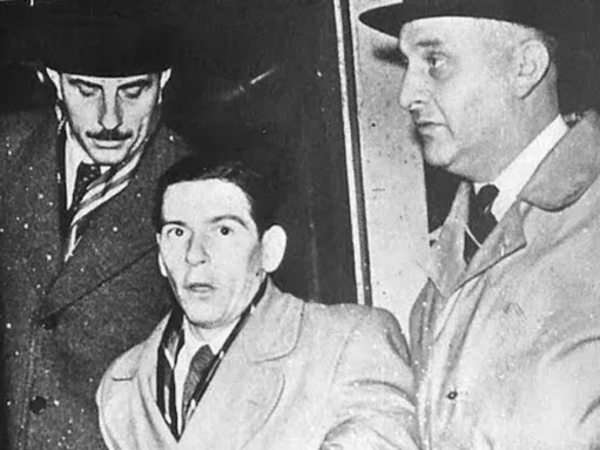Timothy Evans: The Man Wrongfully Executed in One of the UK’s Most Shocking Miscarriages of Justice
Unraveling the chilling story of Timothy Evans, whose tragic fate changed the course of British legal history.

Timothy Evans was a young Welshman whose life ended at the gallows after being falsely convicted of murdering his wife and infant daughter. The story of Timothy Evans is not just a tragic tale of wrongful execution but a pivotal moment that ultimately contributed to the abolition of capital punishment in the United Kingdom. His case exposed deep flaws in the justice system and revealed the horrifying truth about serial killer John Christie. This article explores Timothy Evans’ life, his family, the infamous case, and the long-lasting impact it had on the UK.
Early Life of Timothy Evans
Timothy John Evans was born on November 20, 1924, in Merthyr Tydfil, Wales. Raised in a working-class family, Evans faced educational and developmental challenges from an early age. He was known to have a low IQ and struggled with literacy, which would later play a critical role in how authorities manipulated him during interrogations. Despite these difficulties, Evans worked as a lorry driver, trying to support his family in post-war Britain.
Timothy Evans’ Family
Timothy Evans married Beryl Susanna Thorley in 1947. The couple moved into the top-floor flat at 10 Rillington Place in Notting Hill, London, a multi-tenant building shared with other residents, including John Christie and his wife Ethel. The Evans family welcomed a daughter, Geraldine, in 1948. Despite their efforts to create a happy home, the young couple struggled financially, and their relationship was strained by frequent arguments.
Beryl reportedly sought to terminate a second pregnancy in 1949, which was illegal at the time. This decision would tragically entangle them with their neighbor John Christie, who claimed he had medical experience and could perform the procedure.
The Timothy Evans Case: A Web of Lies
In late 1949, Evans went to the police and told them that his wife had died in a botched abortion. His story was confused and inconsistent—he was clearly under immense psychological pressure. During multiple interrogations, Evans gave conflicting accounts, one of which implicated himself. Authorities used these inconsistencies to arrest and charge him with the murder of his wife and daughter.
In reality, the true perpetrator was John Christie, who had already begun a killing spree that would later include at least eight confirmed victims. Christie strangled both Beryl and Geraldine and buried their bodies in the property. Despite glaring inconsistencies and lack of physical evidence linking Evans to the murders, police focused solely on his confessions, ignoring other leads.
Trial and Execution
Timothy Evans was put on trial in January 1950, but shockingly, he was tried only for the murder of his daughter, Geraldine. The case against him was built primarily on his coerced confessions and the testimony of John Christie, who was perceived at the time as a credible witness.
Evans was found guilty and sentenced to death. Appeals for clemency were denied, and he was hanged at Pentonville Prison on March 9, 1950. He was just 25 years old.
The Truth About John Christie
In 1953, John Christie was arrested and confessed to multiple murders, including that of Beryl Evans. Authorities discovered the remains of several women hidden throughout 10 Rillington Place, including within the walls and garden.
Christie’s confessions directly contradicted his testimony at Evans’ trial, casting serious doubt on the entire case. As public outrage grew, the government was forced to revisit the circumstances surrounding Evans’ conviction.
Public and Legal Repercussions
The revelations about Christie’s crimes led to a formal inquiry in 1965, which concluded that Evans likely did not murder either his wife or daughter. This damning assessment intensified calls to abolish the death penalty in the UK. In 1966, Timothy Evans received a posthumous pardon.
His case, alongside others like Derek Bentley’s, became instrumental in the movement that led to the suspension and eventual abolition of capital punishment for murder in the UK in 1969.
Timothy Evans in the Context of UK Legal History
The wrongful execution of Timothy Evans shook public confidence in the British justice system. It highlighted the dangers of relying on coerced confessions, inadequate defense, and false witness testimonies. The case serves as a stark reminder of the irreversible consequences of capital punishment and remains a key example cited in legal and ethical debates to this day.
Timothy Evans is now widely viewed as a symbol of the innocent victims of a flawed legal process. His story is taught in schools, studied in law courses, and referenced in discussions about criminal justice reform.
Timothy Evans’ Wife: Beryl Evans
Beryl Evans was born in 1929 and married Timothy at the young age of 18. Described by neighbors as kind and quiet, Beryl’s life was cut tragically short at just 20 years old. Her decision to seek help from Christie, likely out of desperation, led to her murder. She was one of Christie’s earliest victims, and her death marked the beginning of his transformation into one of Britain’s most notorious serial killers.
Beryl and her daughter Geraldine’s tragic fates are often overshadowed by the legal drama surrounding Timothy, but their memories remain central to understanding the full scope of the case.
Legacy of the Timothy Evans Case
Today, the Timothy Evans case continues to be a touchstone in the history of British law. Books, documentaries, and films—such as 10 Rillington Place—have kept the memory alive and brought broader awareness to the miscarriage of justice he endured.
For many, Evans’ story serves as a solemn warning: that justice must be thorough, fair, and never swayed by convenience or assumption. His name is etched into the annals of legal history as both a victim and a catalyst for change.
Conclusion
The tragedy of Timothy Evans is not just a story from the past—it is a lesson for the future. His wrongful conviction and execution remind us of the fallibility of human judgment and the devastating cost of legal errors. From a troubled young man in Wales to a central figure in one of the UK’s most infamous legal blunders, Timothy Evans’ legacy lives on as a powerful call for justice reform, integrity, and compassion.


